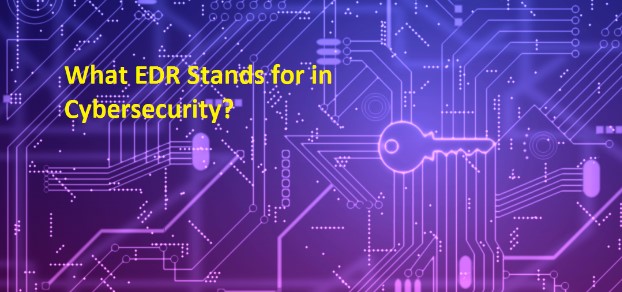According to IBM Study, ransomware attacks in 2022 cost $4.54 million.
In the first half of 2022, 236.1 million ransomware attacks were estimated globally.
The rising attacks on endpoints make organizations wonder about EDR, they want to know how this tool helps them secure their organization against malware and ransomware attacks. And above all, they want to know what EDR stands for. If that's what you have in mind, it's time to continue reading and get all the key details of this most famous endpoint security tool.

What EDR Stands for?
EDR stands for Endpoint detection and response software. It is integrated with Artificial intelligence, machine learning, and behavior analysis technologies to detect, prevent, and respond to known and unknown threats.
It combines the capabilities of EPP so that you don't need to get a separate endpoint protection platform. This software collects data from your endpoints containers, the Internet of things, and cloud workloads.
Endpoint detection software continuously monitors all the endpoints and analyzes their behavior and activities using behavioral and static AI models. As a result, it can identify and block threats. Your endpoint gets protections against document exploits, spearphishing, executables, and memory-only malware, file-less attacks through Xcitium EDR.
Unlock Notable Features of this Endpoint Security Tool
It is a comprehensive protection solution that your organization can use to block and prevent sophisticated threats. Here are some key features of this cybersecurity solution.
Simply Administration and Control
When it comes to the management of your endpoint security, you need to rely on advanced security tools. This software simplifies control for the security team, who can open a single dashboard and manage all the endpoints from a single console. They no longer need to check individual devices or run scans on them one by one. This one tool is good enough to stop threats across all endpoints.
A big problem for remote employees is needing help keeping up with the latest security updates and upgrades. You often experience a cyber attack due to an employee's mistakes.
Now with an EDR, you have a central control system that helps you identify what endpoint is vulnerable and where the problem lies. It becomes easy for a security engineer to patch these vulnerabilities and fix an issue before they lead to any APT or zero-day attack.
EDR Stands for Endpoint Detection And Response
The primary goal of an EDR is to ensure that your security team can detect threats and respond to them on time. Regardless of what endpoint security tool you get, its primary feature will be threat identification, prevention, and remediation.
Antivirus and firewalls are the first lines of defense; they are good at keeping known malware out of your system. However, they could be more effective in dealing with new and emerging threats. However, an endpoint detection tool allows you to discover and control threats of all kinds on your endpoints.
Machine learning and AI-Powered EDr make it easy for your team to monitor threats in real time and continuously perform threat hunting. They can quickly detect file-less malware, zero-day attack, and other bad actors.
The response is another feature that you get in an EDR. Once it finds some malicious file, it readily isolates an endpoint and sends security alerts to the team. This quarantine approach ensures that the rest of the endpoints remain fully secured while your team investigates an event and comes up with a better response.
Accelerate Analysis Process
EDR is a powerful cybersecurity solution as it helps your team detects and respond to threats because they can also analyze a threat. The question is how? Investing money in sophisticated EDR solutions like Xcitium EDR brings incident reporting, situation analysis tools, cloud-based data, and a tree structure.
All these things make it easy for your team to dig deep into an event. Since this tool offers real-time analysis and brings a containment system; thereby your team can check real-time behavior, techniques, and procedure employed by threat actors.
It becomes easy for them to know their enemies better and stay two steps ahead. Cloud database of endpoint data makes event queries quick.
For example, if your team has a question about a security incident, they can run queries and get the information they want within a few seconds. They can spend less than hours in investigation and analytics. As a result, you experience a boost in team productivity and a quick remediation process for threats.
What EDR Stands for in Cybersecurity- Final Thoughts
EDR is an enterprise endpoint security solution integrated with AI/ML and behavior-learning tools to ensure your organization can stay proactive with its cybersecurity approach. It creates an extra layer of security around your endpoints and simplifies their management and control. Besides, your in-house team can readily investigate an event and respond to it on time so that it won't lead to any unfortunate incident.
